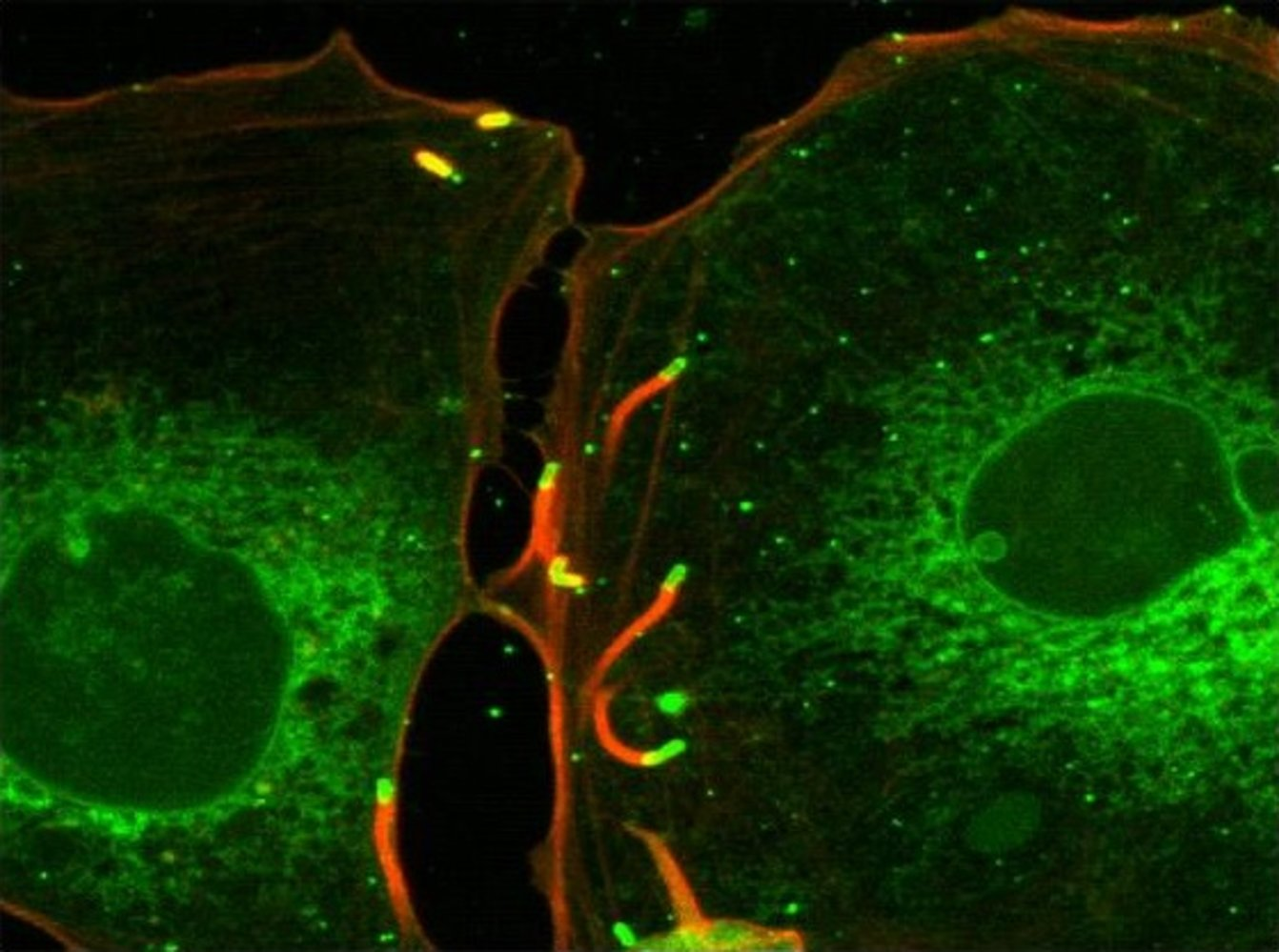Epidemiology
Etiology
- Pathogen: Listeria monocytogenes; a gram-positive, catalase-positive, rod-shaped, facultative intracellular, motile bacterium

- Route of transmission
- Acquired listeriosis: ingestion of contaminated food (listeria can grow in temperatures as low as -1.5 ºC)
- Raw milk products
- Raw and smoked meat/fish
- Industrially processed vegetables such as ready-made salads
- Congenital listeriosis
- Transplacental transmission during pregnancy
- Perinatal transmission (via infected vaginal secretions)
- Acquired listeriosis: ingestion of contaminated food (listeria can grow in temperatures as low as -1.5 ºC)
- Incubation time: 1–90 days (usually within a month)
- Risk factors
- Immunodeficiency
- Age > 60
- Pregnancy
- Neonates
Pathophysiology
- Listeriolysin O: This major virulence factor generates pores in phagosome membranes, which allows phagocytosed L monocytogenes to escape into the cytoplasm of monocytes and avoid lysosomal destruction.
- Actin-based transcellular spread: The organism hijacks the actin-based cellular motility mechanism of host cells, which allows it to spread to adjacent cells without reentering the extracellular space. This significantly reduces exposure of L monocytogenes to antibodies and phagocytic cells.

- Because of these adaptations, antibody- and phagocyte-mediated destruction of the pathogen is impaired; therefore, infections are controlled primarily by the cytotoxic T-cell response.
Clinical features
- Healthy adults: self-limiting gastroenteritis (watery diarrhea)
- Pregnant women
- Flu-like illness
- Chorioamnionitis
- Spontaneous abortion
- Sepsis
- Infants
- Neonatal meningitis
- Sepsis
- Respiratory distress, temperature instability within the first few hours of life
- Granulomatosis infantiseptica
Diagnostics
Treatment
Ampicillin is the treatment of choice for Listeria, which is not sensitive to cephalosporins.